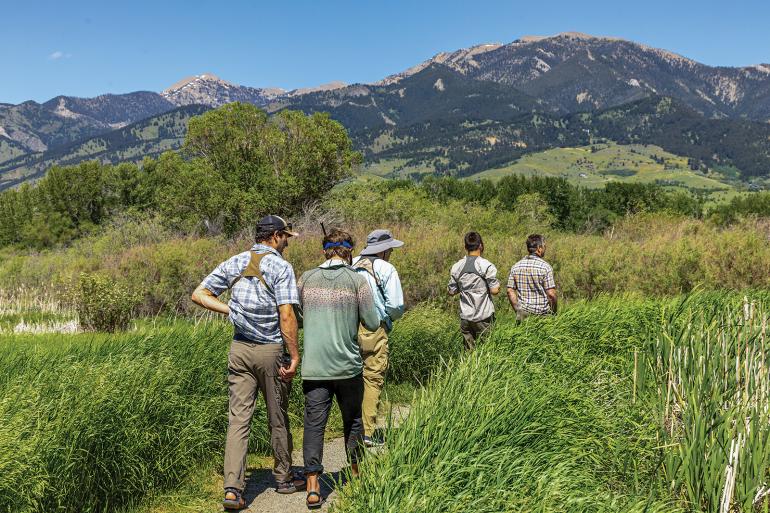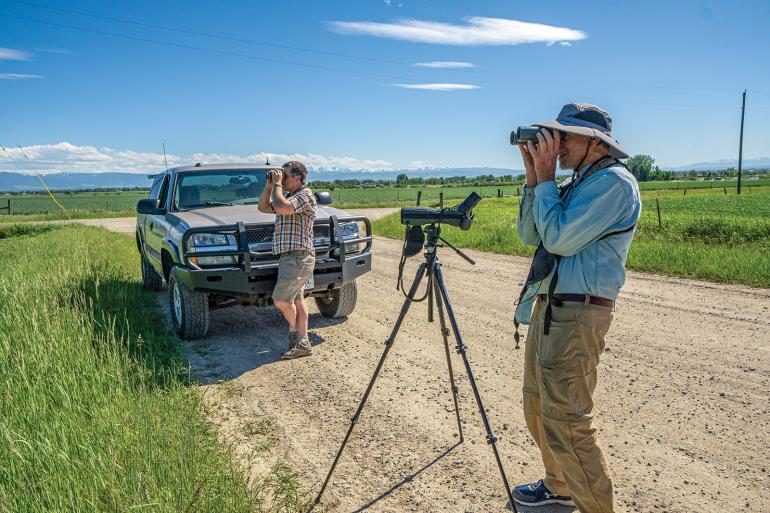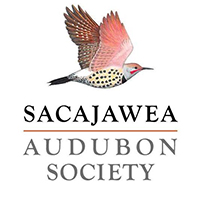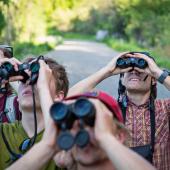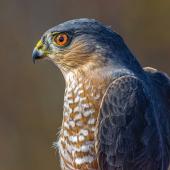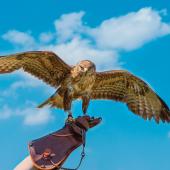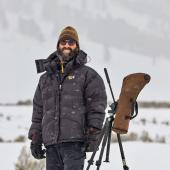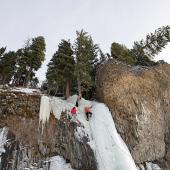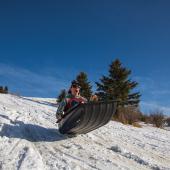A Bird-Eat-Bird World
An afternoon spent raptor-watching in the Gallatin Valley.
On a hot, sunny day in the Gallatin Valley, there’s more than just errant dust in the air. Also in the sky are raptors—a whole smattering of different species—and we’re here to spot them. But we’re not alone. We’re with one of the best: Bozeman’s very own Steve Hoffman, founder of HawkWatch International and director of the annual Bridger Mountains Raptor Survey. He was once described as the most influential raptor authority in the West, so we’re in good hands.
The day begins at the Cherry Creek Fishing Access Site on the north end of town. We’re looking specifically for birds of prey, but other species are plentiful as well. Red-winged blackbirds sit on cattails above the water, belting out their famous “conk-la-ree.” Kingfishers are perched high in tree branches, with waterfowl paddling around below. The diversity is impressive for an area so close to Bozeman.
We peruse the park, picking Steve’s brain as we scan the skies for circling buteos, powerful eagles, and lightning-fast falcons. Jamie, meanwhile, snaps photos. If it wasn’t for her presence, Steve would likely be wondering if he was out with an MSU fraternity chapter, thanks to our never-ending stream of jokes that fill the space between sightings. “Hey look, a crane!” I shout at one point, grabbing everyone’s attention. They all laugh—except for Steve, who’s still trying to get the bird in his sights. Finally he spots the construction equipment across the road. Lowering his binos and shrugging, the look on his face says, Oh, it’s going to be one of those days. But soon enough, Steve not only accepts the relentless sarcasm, but joins in on the fun.
We ask him about his favorite bird sighting. “The harpy eagle in Panama, of which there are only a handful in existence,” he declares. Nobody can top that, we all think. But I try, mentioning the time I spotted a snowy egret a few years back. “Not so fast,” Steve chimes in. “That would be incredibly rare—to the point of being extremely unlikely.” So much for my vagrant megatick, I think, head down, dreams nearly shattered. Still, Steve is picking up on my enthusiasm for birdwatching—even if it’s not yet backed by know-how. As we wrap up at Cherry Creek, we add red-tailed hawks, a bald eagle, osprey, and a vulture to the day’s raptor list.
Despite the plethora of sightings, there’s still one elusive raptor left unchecked—the peregrine falcon.
Next, we caravan out the back way toward Springhill, spotting pheasants, sapsuckers, orioles, and a curlew along the way, calling them out to each other over walkie-talkies. Swainson’s hawks are also added to the raptor list, with one perched picturesquely on the Manhattan water tower. Once we settle into the fields, we find kestrels dominating the air in every direction, darting into the crops like homing missiles, snatching grasshoppers. No rodent is safe from the sharp, watchful eye of a northern harrier sitting statue-still on a fence post. Far off in the shadow of the Bridgers, we see a golden eagle soaring high above it all. Then on our way out, one final species joins the tally—a merlin, swooping right above our rigs.
Despite the plethora of sightings, there’s still one elusive raptor left unchecked—the peregrine falcon. There are some reported to be nesting in the bluffs above the Missouri at Headwaters State Park, so we make one last stop, spotting scopes and binos in hand. From a distance, they’re tough to locate—until Mike spots one nestled in the rocks. “Wow, how’d you manage to see them?” Steve asks. “Well, I came here a couple weeks ago and found them in my riflescope, but couldn’t get a good shot off,” Mike quips. Steve chuckles, fully privy to our incorrigible jesting by now.
The peregrine-watching is a fine way to cap off the day—not only are they impressive birds, beautiful and agile as they career across the cliffs, but that makes a whopping ten raptor species tallied. We’re packing up to head home when Steve hits me with a proposition: he has one spot left for the fall raptor-migration survey in the Bridgers. “You’ve got some damn good eyes,” he says. “You’ll just need to get your ID skills up before then. What do you say?”
Sure enough, a few months later I find myself atop the Bridgers, ID game up to par, counting birds of prey for two months—all thanks to an eye-opening day of birdwatching, right in our own backyard.


